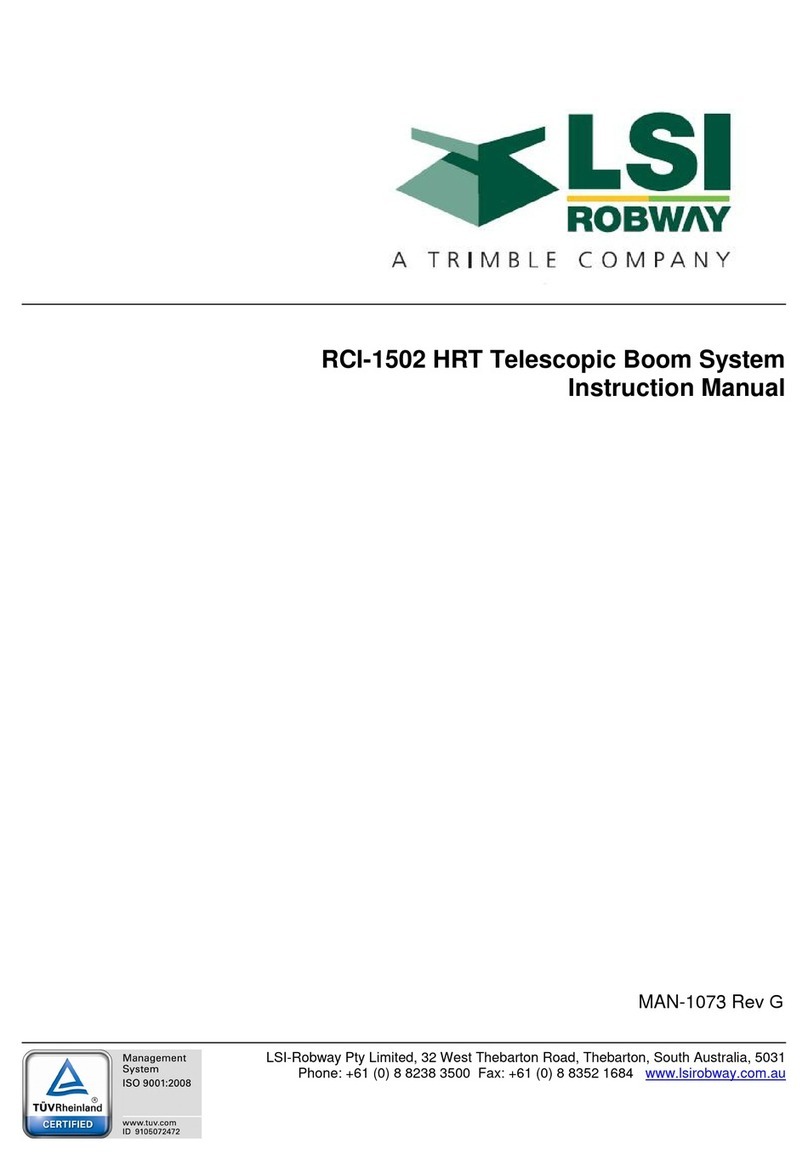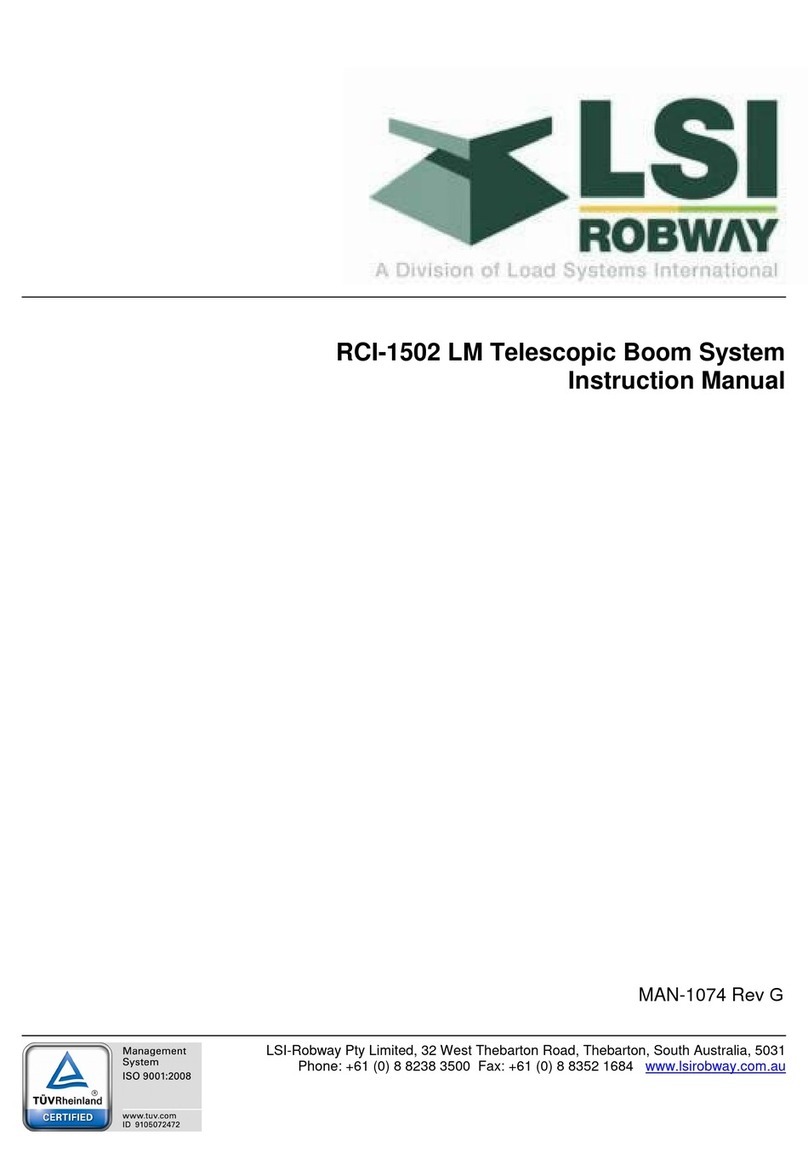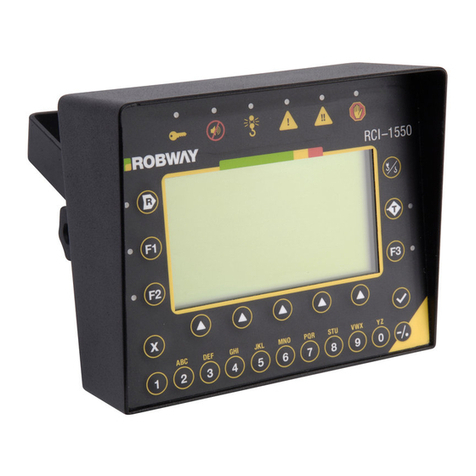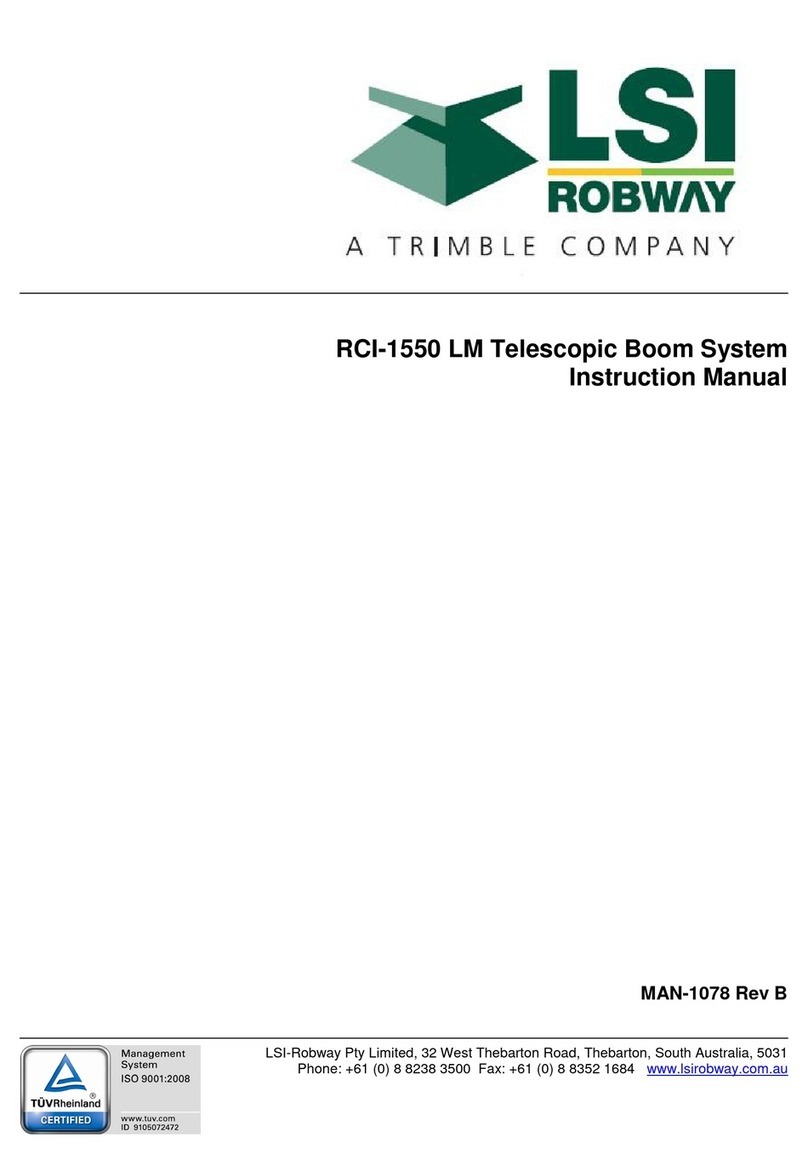6.3. LED INDICATORS ..............................................................................................................................................23
6.3.1. Override LED ...........................................................................................................................................23
6.3.2. Audible Alarm Disabled LED...................................................................................................................23
6.3.3. A.T.B. Indicator (anti-two-block or over-hoist)........................................................................................23
6.3.4. Approach to Rated Capacity LED ............................................................................................................23
6.3.5. 100% Capacity Exceeded LED.................................................................................................................23
6.3.6. Motion Cut LED........................................................................................................................................23
6.4. OVER-RIDE KEY-SWITCH (IF FITTED)................................................................................................................23
6.5. DISABLE KEY SWITCH (IF FITTED)....................................................................................................................24
6.6. TURNING ON THE RCI-1550 ..............................................................................................................................24
6.6.1. On Power Up............................................................................................................................................24
6.7. MENU NAVIGATION...........................................................................................................................................24
6.7.1. Config Change Menu................................................................................................................................25
6.7.2. Function Codes.........................................................................................................................................25
6.7.3. Display Options Menu ..............................................................................................................................26
6.8. DATA LOGGING AND DATA DOWN-LOADING ....................................................................................................26
7. CALIBRATION..................................................................................................................................................27
7.1. CALIBRATION PURPOSE.....................................................................................................................................27
7.1.1. Entering Calibration Mode and Selecting calibration functions..............................................................27
7.1.2. Function codes menu item ........................................................................................................................27
7.1.3. General information regarding text editing..............................................................................................28
7.2. CALIBRATION FUNCTIONS BREAKDOWN ...........................................................................................................28
7.2.1. Exit Calibration item ................................................................................................................................28
7.2.2. View Main Load and View Aux Load items..............................................................................................28
7.2.3. View Boom Angle item..............................................................................................................................29
7.2.4. View Jib Angle item ..................................................................................................................................30
7.2.5. Set Gain Trans 1 item ...............................................................................................................................30
7.2.6. Set Gain Trans 2 item ...............................................................................................................................30
7.2.7. Set MUX. Delay item ................................................................................................................................31
7.2.8. No. of Samples item ..................................................................................................................................31
7.2.9. Set Lift Value (Threshold) item.................................................................................................................31
7.2.10. Set Rigging Load Threshold item..............................................................................................................32
7.2.11. Set Rigging Length Threshold item...........................................................................................................32
7.2.12. View Directions item.................................................................................................................................32
7.2.13. View Load-Chart item...............................................................................................................................33
7.2.14. View Digital I/P item ................................................................................................................................33
7.2.15. Set Date item.............................................................................................................................................33
7.2.16. Set Time item.............................................................................................................................................34
7.2.17. Download Logger item .............................................................................................................................34
7.2.18. View Cal-Data item ..................................................................................................................................34
7.2.19. Change Duty item .....................................................................................................................................35
7.2.20. Change Falls item.....................................................................................................................................35
7.2.21. Back Up Cal-Table item............................................................................................................................35
7.2.22. Restore Cal-Table item.............................................................................................................................36
7.2.23. Erase Cal-Table! item...............................................................................................................................36
7.2.24. User Variables..........................................................................................................................................36
7.2.25. Viewing Errors..........................................................................................................................................37
7.2.26. Verifying Operation of Sensors.................................................................................................................37
7.3. TOOLS REQUIRED FOR CALIBRATION ................................................................................................................38
7.4. MAP OF CALIBRATION (SUGGESTED ORDER) .....................................................................................................39
7.5. CALIBRATING BOOM ANGLE ....................................................................................................................39
7.5.1. Calibrating a low boom angle ..................................................................................................................39
7.5.2. Calibrating a high boom angle.................................................................................................................39
7.6. CALIBRATING JIB ANGLE (LUFFING FLY JIBS ONLY) ..................................................................................40
7.6.1. Calibrating low Jib angle .........................................................................................................................40
7.6.2. Calibrating high Jib angle........................................................................................................................40
7.7. CALIBRATING TENSIOMETER BASED SYSTEMS ..................................................................................40
7.7.1. Calibrate the Main Winch with light load.................................................................................................40
7.7.2. Calibrate the Main Winch with heavy load...............................................................................................40
7.7.3. Calibrate the Aux winch with light load. ..................................................................................................41

































